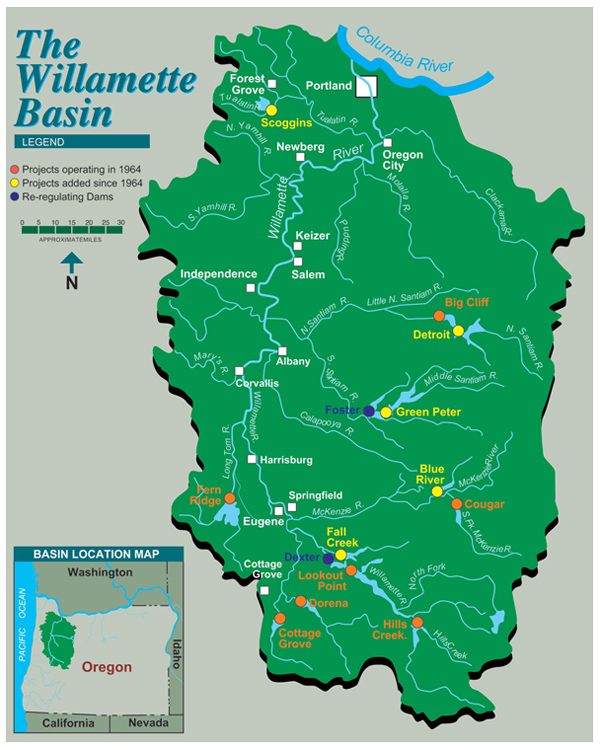
The Corps owns and operates 11 dams (with two re-regulating dams) and storage reservoir projects in the Willamette River Basin to help reduce flooding downstream as far north as Portland, Ore. The majority of the flood storage space in the larger basin is available from these reservoirs in the North and South Santiam, McKenzie, and Coast and Middle Fork Willamette river basins.
During the wettest time of the year (mid-November through January) and during significant rain events, the Corps stores water flowing in the reservoirs. As water levels in uncontrolled rivers in the watershed subside, the Corps releases the water. River levels may remain high for an extended time after rain events as stored water is released. Whenever possible, the Corps tries to keep river levels at or below the “bankfull” levels established by the National Weather Service.
Big Cliff and Dexter dams are used to regulate, or even out, the vacillating flows from power-generating operations at the much larger Detroit and Lookout Point dams, respectively. While built under the same Congressional authorizations as the other dams, they are not operated to reduce flood risks.
The U.S. Bureau of Reclamation can be operate its Scoggins Dam in the Tualatin River Basin to provide additional water storage to further reduce localized flood risks.
It is a carefully monitored system. Operators releasing water from the dams in the southern part of the valley must take into account all the uncontrolled water flowing into the system to the north. The dams can manage about 77 percent of the water flowing into the drainage area above the Eugene-Springfield area. At Albany, only about 43 percent is manageable. In Salem, that drops to 42 percent. And in Portland, only about 27 percent of the drainage area above is managed.